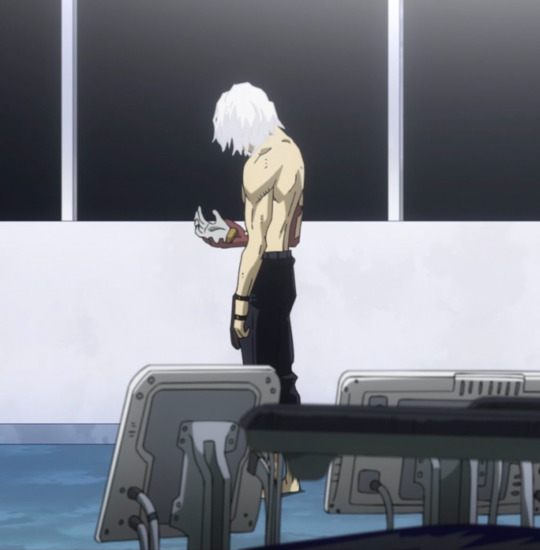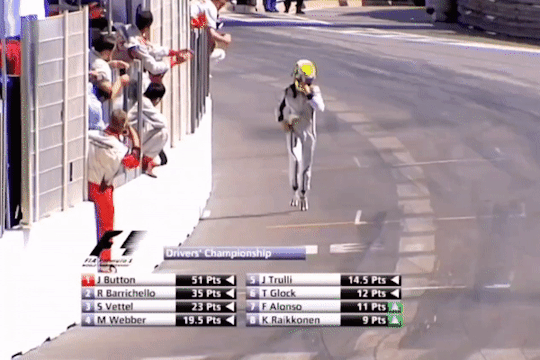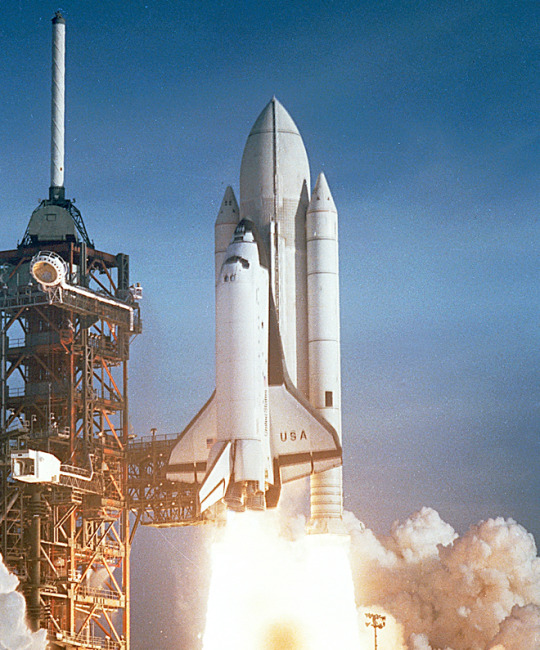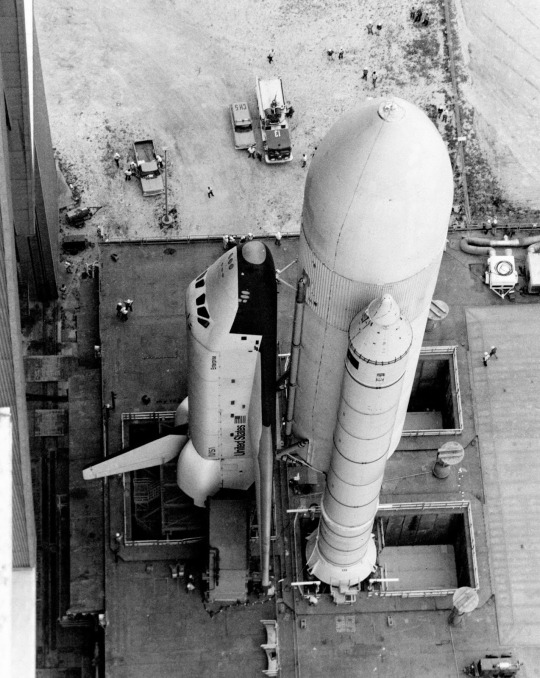#6/1/17
Text










little touches
#jenmish#cockles#misha collins#jensen ackles#spnsf#spnsf 2024#2024#supernatural sf 2024#2:19#3:40#6:35#6:46#12:52#19:24#21:20#24:42#54:17#1:01:43
285 notes
·
View notes
Text
cabin headcanons masterlist



a/n: these are all my personal headcanons. i will be making ones for more minor gods.
cabin 1- zeus ⚡️
cabin 3- poseidon 🌊
cabin 4- demeter 🪴
cabin 5- ares ⚔️
cabin 6- athena 🧠
cabin 7- apollo ☀️
cabin 8- artemis 🌙
cabin 9- hephaestus 🛠️
cabin 10- aphrodite 💗
cabin 11- hermes ⚕️
cabin 12- dionysus 🍷
cabin 13- hades 💀
cabin 14- iris 🌈
cabin 15- hypnos 💤
cabin 16- nemesis ⚖️
cabin 17- nike 🏆
cabin 18- hebe 🍶
cabin 19- tyche 🎰
cabin 20- hecate 🪄
cabin 21- hestia 🔥
cabin 22- thanatos 🪦
cabin 23- morpheus 🛌
cabin 24- melinoe 👻
cabin 25- persephone 🌸
cabin 26- eros 💘
cabin 27- nyx 🌌
#percy jackson and the olympians#heroes of olympus#pjo#hoo#pjo hoo toa#pjo fandom#hoo fandom#pjo series#hoo series#pjo cabins#cabin 1#cabin 3#cabin 4#cabin 5#cabin 6#cabin 7#cabin 9#cabin 10#cabin 11#cabin 12#cabin 13#cabin 14#cabin 15#cabin 16#cabin 17#cabin 18#cabin 19#cabin 20#cabin 21#cabin 22
198 notes
·
View notes
Note
TBD?
6/26/24 WIP Wednesday (OPEN) | TBD
"What are we talking about?" Katelyn asks coming into the kitchen looking far less pale than she had when she left.
“Josten’s sex life, Aaron’s very interested in it.” Andrew leans against his palm, glad to watch his brother squirm.
Katelyn’s eyes go wide, “You’ve already-!”
“No, Andrew thinks that Josten has a boyfriend.” Aaron interrupts and Katelyn looks at Andrew as if he’s particularly slow.
“Neil doesn’t have a boyfriend.”
<<Prev | First | Next >>
#TBD AU#AFTG#AFTG AU#Andrew Minyard#Neil Josten#Andreil#TBD - Chapter 1 - 78#6-26-24 WIP Wednesday#WIP Wednesday Ask Game#17
37 notes
·
View notes
Text



















"death" (死 shi), "handle, grip" (柄 gara), "tree" (木 ki)
#so i've been working on this since the bow and arrow post. and oh boy have some things changed since then#sources in the tags as usual#bnha#shigaraki tomura#shimura tenko#mha#bnha spoilers#mha spoilers#manga spoilers#bnha manga spoilers#mha manga spoilers#i am so serious anime watchers. SPOILERS.#bnha web weave#mha web weave#tomura shigaraki#tenko shimura#web weaving#compilation#my webweaving#long post#sources:#(1) & (4) & (6) ocean vuong#(9) caitlyn siehl#(11) clementine von radics#(13) cassandra clare#(15) & (17) & (19) doctor who#q#happy birthday blog etc :')#shigaraki i will love u forever
39 notes
·
View notes
Text
Season 6 episode 17, of 911 titled Love Is In the Air. Both Eddie and Buck don’t have that great days off trying to connect with women. Eddie appears to have been bitten by a dog or scalded by coffee. Good grief.
Eddie is relating his day to the 118, and saying he just wants what he had with Shannon. He says “It just happened, it was magic.” By magic he means chemistry. Like what he has with Buck. Gen notes to Buck that he’s no expert on dating either. Please please pleeeeeease let these two idiots end up together. Uhhhh hello, Buck is literally right there. I want it to hit both of them like a ton of bricks, that oh wow it did just happened, it has been magic and it always has been there!!!!!
I admit to laughing at Buck’s misadventure with trying yo date Natalia as it appeared he was having all his ghosts or relationships of past keep appearing. Including the lady who he helped become a mother. I’m worried about Buck regarding this one.
Uch I was correct Marisol was introduced a few episodes ago when her brother sealed himself in her attic by accident. And now of course she runs into Eddie at the hardware store because Christopher needs help with his project. Grrrr.
20 notes
·
View notes
Text

#Haim Steinbach#1#Plastic laminated wood shelf#17 red enameled cast iron pots#6 plastic and metal digital clocks and 4 glass#metal and red coloured oil “Lava Lites”#165 × 193 × 48 cm#1986#ultra red
26 notes
·
View notes
Text
sometimes its so crazy to realize that there's actually a lot of things i like. that i thought i didn't like because i was a depressed teenager. i love being outside! i love swimming! i love talking to people! even strangers sometimes! i love getting dressed in fun outfits and doing makeup! i love reading and going to art museums! i just thought i was doomed forever to a life of complete and total apathy and void! and now look at me! still a little shaky but i'm doing it!!!!!
#reaching back thru the spacetime continuum to grab 15 year old bunny and shake him by the shoulders a little bit and go hey!!!#it's not ALWAYS gonna be like this!!!#one day you're gonna be 23 and it'll still be like this sometimes!!!#sometimes you'll still wake up and feel it but it won't be all the time!!!!!!#you're gonna have friends who know you and see you even the ugly parts of you#and they're still gonna love you anyways!!!!! it's not over yet i promise!!!!!!#and then one day when i'm 34 i'm sure i'll think the same thing about me now#but until then! it's me and myself when i was 22 and 21 and 20 and 19 and 18 and 17 and 16 and 15#and 14 and 13 and 12 and 11 and 10 and 9 and 8 and 7 and 6 and 5 and 4 and 3 and 2 and 1
13 notes
·
View notes
Text
it would be so cool if the tumblr For You tab actually showed me content i actively like and care about. i look forward to the day.
#tumblr: ah i see you follow one (1) mutual who likes this Specific Content despite you both obvi posting Other Content#tumblr: so we will make 30% of your FY full of Specific Content (:#tumblr: another 60% will be allocated to fandoms you have never in your life interacted with#tumblr: the last 10% will be shit you like but you've already seen 17 times in a row for the last 6 months
14 notes
·
View notes
Text






Max Verstappen in Inside the mind of a superstar
@MotoGP
#max verstappen#mv1#f1#formula 1#my gifs#my edits#i made 17 gifs but these 6 are my favourites#it's also getting easier to use photoshop again! and more fun :)#he's sitting next to & talking to Marc Marquez btw#both very expressive boys
218 notes
·
View notes
Text
Alright I have a lot of ocs for Percy Jackson, but I don’t have a lot of powers for them. Like, the most interesting power I have rn is an Apollo kid who can inflict plague and sickness on other people. All my other characters? Lame! So, give me suggestions on powers for any cabin that aren’t just “Oh, a son of Poseidon controls water”.
Thanks :)
#percy jackson#percy jackon and the olympians#cabins#cabin 1#cabin 2#cabin 3#cabin 4#cabin 5#cabin 6#cabin 7#cabin 8#cabin 9#cabin 10#cabin 11#cabin 12#cabin 13#cabin 14#cabin 15#cabin 16#cabin 17#cabin 18#cabin 19#cabin 20#demigods#power#magic
14 notes
·
View notes
Text










2009 Monaco Grand Prix - Jenson Button(ft. Rubens Barrichello)
#omfg jenson running to the podium is SOOOOOOOO ICONIC#he is an icon! he is a legend! he IS the *moment*!!#like who else is doing it like him???? wearing a whole racesuit and helmet jogging all the way down the pitlane?????? forrest gump who??#every race i somehow fall more in love him which i didnt think was possible as i am already incredibly endeared#hes so handsome on this podium my god...his pretty blue eyes....okay sry sry its very late at night#anyways not the most interesting race i dont think? i just feel incredibly proud of jenson and brawn as a whole#(not to jinx it but amr to me is the modern brawn so maybe they can pull something like this off this wknd!!)#watching seb era races is lowkey distracting for me cause i do care about all the other drivers but#i cant help but be like vader in rots like: 'where is seb? is he safe? is he alright?' and he DNFed this race and i was sad :(#i usually put the p2 and p3 as featuring but i realized kimi is nowhere to be found in these oops!!#jenson button#jb22#brawn#rubens barrichello#2009 monaco gp#2009 monaco grand prix#f1#formula 1#formula one#we do a little bit of f1#(2009: 6/17 races watched)#season: 2009
100 notes
·
View notes
Text
I recently finished 'Song of Achilles' and these are some of my favourite quotes:
1-"And perhaps it is the greater, after all, to be left on earth, when another is gone. Do you think?"
-Chiron
2-"I will tell you a secret." "I am going to be the first. Swear it." "Because you're the reason. Swear it."
-Achilles
3-"If you have to go, you know I will go with you."
-Achilles
4-...He started to speak but I was too quick for him. One of my hands went to clasp his knees, the other reached upward, to seize his chin with my hand. The pose of supplication. It was a gesture I had seen many times, but had never made myself. I was under his protection now; he was bound to treat me fairly, by the law of the gods.
"Tell me where he is."
-Patroclus
5- I think: this is what I will miss. I think: I will kill myself rather than miss it. I think: how long do we have?
6- ...As for the goddess' answer, I did not care. I would have no need of her. I did not plan to live after he was gone.
7- ...I could not bear it. There was only one thing I could think of. I turned to Achilles and seized the front of his tunic. I kissed him.
When I let go again she was staring at us. Staring and staring.
I gestured to her bonds, and back to the knife. 'All right?'
She hesitated a moment. Then slowly offered her hands.
8- ...It was easy to stay with them long and late, until I heard the creaking of the chariot, and the distant banging of bronze, and returned to greet my Achilles.
9-"So which of the suitors would you have picked?"
I shoved him and he laughed.
-Achilles
10- In the darkness, two shadows, reaching through the hopeless, heavy dusk. Their hands meet, and light spills in a flood, like a hundred golden urns pouring out the sun.
#1 is what they fear the most/ want the least#2 is a broken promise#3 is a decleration of love#4 is why patrocules would top; it is proof Patrocules could go feral for Achilles.#It is also underrated like why does no one talk about it?#5 and 6 are how i like my love written: heartbreaking and deadly#7 is so fucking awesome#i love it#8 gives married couple vibes#when i read 9 all i could think was: they were 17#10 is the bittersweet ending that made me disconnect from the world#i loved it#song of achilles#achilles#patroclus#patrochilles#book quotes
9 notes
·
View notes
Text
you ever think about how pretty much the only reason we use base10 is because we have 10 fingers and if everyone had 6 fingers on each hand we'd use base12 and never even think a thing of it and also math would be pretty much better in every way?
#i think for this september's existential crisis i'm gonna become a base12 truther#and bc i know everyone on this website is math illiterate so to clarify:#the way base12 works is that we have a few extra digits between 9 and 10#so to count we go:#0 1 2 3 4 5 6 7 8 9 X Y#so X = 10 and Y = 11#then '10' = 12#so the next step of counting goes:#10 11 12 13 14 15 16 17 18 19 1X 1Y#(i know this looks insane to you but the only reason for that is because you are used to base 10 i promise this makes sense#if you throw away everything you know and come at it with fresh eyes)#so anyways in this case '11' = 13. '19' = 21. 1X = 22. 1Y = 23#and '20' = 24#bc the tens column is not the tens column it's actually the twelves column#so each [number] in the second column does not mean 'add [this many] 10s to this' it means 'add [this many] 12s to this'#and this would not be tricky at higher numbers bc in base12 twelve is not counted as 'ten and two' it's just its own thing#in fact it would be harder to multiply by tens bc 10 would be the equivalent of like. 8 here.#it's not its own thing (ten) it's actually 'twelve minus two'#to count by tens goes '0 Y 18 26 34 42 50' and '50' is of course 10x6 in this case so it equals 60 in base10#not hard#there's a pattern to it.#but it's not as easy as counting by 12s#anyways we already have base12 systems and i like them they are very easy to divide#it's only harder than base10 bc arabic numerals are base10 so it's harder to depict base12 logically in a base10 system#hours are base 12. inches to feet are base 12#anyways this post is legally classified as scifi and/or speculative fiction#or. fuck. it's not even fictional#this is how math would work in a different system#sci-nonfi#speculative nonfiction
7 notes
·
View notes
Text
ever since I was little I never gave a fuck if anyone else liked me, I just wanted to like me and eventually I did for a little while but then I forgot how
#2012 and 2016 were my 2 best years probably#12/13 & 16/17 yro me slayed too hard I fear#1/2/3/4/5/6/7/8/9/10/11/14/15/18/19/20/21/22/23/24/25 flopped#though 20 was ok ily lockdown
12 notes
·
View notes
Text

Elijah is Fed by Ravens
2 And the word of the LORD came unto him, saying, 3 Get thee from here {hence}, and turn thee eastward, and hide thyself by the brook Cherith, which is before the Jordan. 4 And it shall be, that thou shalt drink of the brook; and I have commanded the ravens to feed thee there. 5 So he went and did according unto the word of the LORD; for he went and dwelt by the brook Cherith, which is before the Jordan. 6 And the ravens brought him bread and flesh in the morning, and bread and flesh in the evening; and he drank of the brook.
— 1 Kings 17:2-6 | King James Bible: Purple Letter Edition (KJBP)
The King James Bible: Purple Letter Edition © 2009 by Jim Musser. All rights Reserved.
Cross References: 1 Kings 17:1; 1 Kings 17:7; 1 Kings 17:9; Jeremiah 36:19; Jeremiah 37:21
Read full chapter
Commentary on 1 Kings 17 by Matthew Henry
#Elijah#fed#ravens#1 Kings 17:2-6#Book of First Kings#Old Testament#KJBP#The King James Bible: Purple Letter Edition
9 notes
·
View notes
Text
Cancelled Missions: NASA's October 1977 Space Shuttle Flight Itinerary
"Soon after President Richard Nixon gave his blessing to the Space Shuttle Program on January 5, 1972, NASA scheduled its first orbital flight for 1977, then for March 1978. By early 1975, the date had slipped to March 1979. Funding shortfalls were to blame, as were the daunting engineering challenges of developing the world's first reusable orbital spaceship based on 1970s technology. The schedule slip was actually worse than NASA let on: as early as January 32, 1975, an internal NASA document (marked 'sensitive') gave a '90% probability date' for the first Shuttle launch of December 1979.
In October 1977, Chester Lee, director of Space Transportation System (STS) Operations at NASA Headquarters, distributed the first edition of the STS Flight Assignment Baseline, a launch schedule and payload manifest for the first 16 operational Shuttle missions. The document was in keeping with NASA's stated philosophy that reusable Shuttle Orbiters would fly on-time and often, like a fleet of cargo airplanes. The STS Utilization and Operations Office at NASA's Johnson Space Center (JSC) in Houston had prepared the document, which was meant to be revised quarterly as new customers chose the Space Shuttle as their cheap and reliable ride to space.
The JSC planners assumed that six Orbital Flight Test (OFT) missions would precede the first operational Shuttle flight. The OFT flights would see two-man crews (Commander and Pilot) put Orbiter Vehicle 102 (OV-102) through its paces in low-Earth orbit. The planners did not include the OFT schedule in their document, but the May 30, 1980 launch date for their first operational Shuttle mission suggests that they based their flight schedule on the March 1979 first OFT launch date.
Thirteen of the 16 operational flights would use OV-102 and three would use OV-101. NASA would christen OV-102 Columbia in February 1979, shortly before it rolled out of the Rockwell International plant in Palmdale, California.
As for OV-101, its name was changed from Constitution to Enterprise in mid-1976 at the insistence of Star Trek fans. Enterprise flew in Approach and Landing Test (ALT) flights at Edwards Air Force Base in California beginning on February 15, 1977. ALT flights, which saw the Orbiter carried by and dropped from a modified 747, ended soon after the NASA JSC planners released their document.
The first operational Space Shuttle mission, Flight 7 (May 30 - June 3, 1980), would see Columbia climb to a 225-nautical-mile (n-mi) orbit inclined 28.5° relative to Earth's equator (unless otherwise stated, all orbits are inclined at 28.5°, the latitude of Kennedy Space Center in Florida). The delta-winged Orbiter would carry a three-person crew in its two-deck crew compartment and the bus-sized Long Duration Exposure Facility (LDEF) in its 15-foot-wide, 60-foot-long payload bay.
Columbia would also carry a 'payload of opportunity' - that is, an unspecified payload. The presence of a payload of opportunity meant that the flight had available excess payload weight capacity. Payload mass up would total 27,925 pounds. Payload mass down after the Remote Manipulator System (RMS) arm hoisted LDEF out of Columbia's payload bay and released it into orbit would total 9080 pounds.

A page from the STS Flight Assignment Baseline document of October 1977 shows payloads and other features of the first five operational Space Shuttle missions plus Flight 12/Flight 12 Alternate
During Flight 8 (July 1-3, 1980), Columbia would orbit 160 n mi above the Earth. Three astronauts would release two satellites and their solid-propellant rocket stages: Tracking and Data Relay Satellite-A (TDRS-A) with a two-stage Interim Upper Stage (IUS) and the Satellite Business Systems-A (SBS-A) commercial communications satellite on a Spinning Solid Upper Stage-Delta-class (SSUS-D).
Prior to release, the crew would spin the SBS-A satellite about its long axis on a turntable to create gyroscopic stability and raise TDRS-A on a tilt-table. After release, their respective solid-propellant stages would propel them to their assigned slots in geostationary orbit (GEO), 19,323 n mi above the equator. Payload mass up would total 51,243 pounds; mass down, 8912 pounds, most of which would comprise reusable restraint and deployment hardware for the satellites.
The TDRS system, which would include three operational satellites and an orbiting spare, was meant to trim costs and improve communications coverage by replacing most of the ground-based Manned Space Flight Network (MSFN). Previous U.S. piloted missions had relied on MSFN ground stations to relay communications to and from the Mission Control Center (MCC) in Houston. Because spacecraft in low-Earth orbit could remain in range of a given ground station for only a few minutes at a time, astronauts were frequently out of contact with the MCC.
On Flight 9 (August 1-6, 1980), Columbia would climb to a 160-n-mi orbit. Three astronauts would deploy GOES-D, a National Oceanic and Atmospheric Administration (NOAA) weather satellite, and Anik-C/1, a Canadian communications satellite. Before release, the crew would raise the NOAA satellite and its SSUS-Atlas-class (SSUS-A) rocket stage on the tilt-table and spin up the Anik-C/1-SSUS-D combination on the turntable. In addition to the two named satellites, NASA JSC planners reckoned that Columbia could carry a 14,000-pound payload of opportunity. Payload mass up would total 36,017 pounds; mass down, 21,116 pounds.
Following Flight 9, NASA would withdraw Columbia from service for 12 weeks to permit conversion from OFT configuration to operational configuration. The JSC planners explained that the conversion would be deferred until after Flight 9 to ensure an on-time first operational flight and to save time by combining it with Columbia's preparations for the first Spacelab mission on Flight 11. The switch from OFT to operational configuration would entail removal of Development Flight Instrumentation (sensors for monitoring Orbiter systems and performance); replacement of Commander and Pilot ejection seats on the crew compartment upper deck (the flight deck) with fixed seats; power system upgrades; and installation of an airlock on the crew compartment lower deck (the mid-deck).
Flight 10 (November 14-16, 1980) would be a near-copy of Flight 8. A three-person Columbia crew would deploy TDRS-B/IUS and SBS-B/SSUS-D into a 160-n-mi-high orbit. The rocket stages would then boost the satellites to GEO. Cargo mass up would total 53,744 pounds; mass down, 11,443 pounds.
Flight 11 (December 18-25, 1980) would see the orbital debut of Spacelab. Columbia would orbit Earth 160 n mi high at 57° of inclination. NASA and the multinational European Space Research Organization (ESRO) agreed in August 1973 that Europe should develop and manufacture Spacelab pressurized modules and unpressurized pallets for use in the Space Shuttle Program. Initially dubbed the 'sortie lab,' Spacelab would operate only in the Orbiter payload bay; it was not intended as an independent space station, though many hoped that it would help to demonstrate that an Earth-orbiting station could be useful.
ESRO merged with the European Launcher Development Organization in 1975 to form the European Space Agency (ESA). Columbia's five-person crew for Flight 11 would probably include scientists and at least one astronaut from an ESA member country.
Flight 12 (January 30 - February 1, 1981), a near-copy of Flights 8 and 10, would see Columbia's three-person crew deploy TDRS-C/IUS and Anik-C/2/SSUS-D into 160-n-mi-high orbit. Payload mass up would total 53,744 pounds; mass down, 11,443 pounds.
JSC planners inserted an optional 'Flight 12 Alternate' (January 30 - February 4, 1981) into their schedule which, if flown, would replace Flight 12. Columbia would orbit 160 n mi above the Earth. Its three-person crew would deploy Anik-C/2 on a SSUS-D stage. The mission's main purpose, however, would be to create a backup launch opportunity for an Intelsat V-class satellite already scheduled for launch on a U.S. Atlas-Centaur or European Ariane I rocket. An SSUS-A stage would boost the Intelsat V from Shuttle orbit to GEO.
NASA JSC assumed that, besides the satellites, stages, and their support hardware, Columbia would for Flight 12 Alternate tote an attached payload of opportunity that would need to operate in space for five days to provide useful data (hence the mission's planned duration). Payload mass up would total 37,067 pounds; mass down, 17,347 pounds.

Space Shuttle Flights 13 through 18 would include the first orbital mission of the OV-101 Enterprise (Flight 17), during which astronauts would retrieve the LDEF payload deployed during Flight 7.
Flight 13 (March 3-8, 1981) would see three astronauts on board Columbia release NOAA's GOES-E satellite attached to an SSUS-D stage into a 160-n-mi-high orbit. OV-102 would have room for two payloads of opportunity: one attached at the front of the payload bay and one deployed from a turntable aft of the GOES-E/SSUS-D combination. Payload mass up would total 38,549 pounds; mass down, 23,647 pounds.
Flight 14 would last 12 days, making it the longest described in the STS Flight Assignment Baseline document. Scheduled for launch on April 7, 1981, it would carry a 'train' of four unpressurized Spacelab experiment pallets and an 'Igloo,' a small pressurized compartment for pallet support equipment. The Igloo, though pressurized, would not be accessible to the five-person crew. OV-102 would orbit 225 n mi high at an inclination of 57°. Mass up would total 31,833 pounds; mass down, 28,450 pounds.
Flight 15 (May 13-15, 1981) would be a near-copy of Flights 8, 10, and 12. OV-102 would transport to orbit a payload totaling 53,744 pounds; payload mass down would total 11,443 pounds. The JSC planners noted the possibility that none of the potential payloads for Flight 15 — TDRS-D and SBS-C or Anik-C/3 — would need to be launched as early as May 1981. TDRS-D was meant as an orbiting spare; if the first three TDRS operated as planned, its launch could be postponed. Likewise, SBS-C and Anik-C/3 were each a backup for the previously launched satellites in their series.
Flight 16 (June 16-23, 1981) would be a five-person Spacelab pressurized module flight aboard OV-102 in 160-n-mi-high orbit. Payloads of opportunity totaling about 18,000 pounds might accompany the Spacelab module; for planning purposes, a satellite and SSUS-D on a turntable behind the module was assumed. Payload mass up would total 35,676 pounds; mass down, 27,995 pounds.
Flight 17, scheduled for July 16-20, 1981, would see the space debut of Enterprise and the retrieval of the LDEF released during Flight 7. OV-101 would climb to a roughly 200-n-mi-high orbit (LDEF's altitude after 13.5 months of orbital decay would determine the mission's precise altitude).
Before rendezvous with LDEF, Flight 17's three-man crew would release an Intelsat V/SSUS-A and a satellite payload of opportunity. After the satellites were sent on their way, the astronauts would pilot Enterprise to a rendezvous with LDEF, snare it with the RMS, and secure it in the payload bay. Mass up would total 26,564 pounds; mass down, 26,369 pounds.
For Flight 18 (July 29-August 5, 1981), Columbia would carry to a 160-n-mi-high orbit a Spacelab pallet dedicated to materials processing in the vacuum and microgravity of space. The three-person flight might also include the first acknowledged Department of Defense (DOD) payload of the Space Shuttle Program, a U.S. Air Force pallet designated STP-P80-1. JSC called the payload 'Planned' rather than 'Firm' and noted somewhat cryptically that it was the Teal Ruby experiment 'accommodated from OFT [Orbital Flight Test].'
The presence of the Earth-directed Teal Ruby sensor payload would account for Flight 18's planned 57° orbital inclination, which would take it over most of Earth's densely populated areas. Payload mass up might total 32,548 pounds; mass down, 23,827 pounds.

Space Shuttle Flights 20 through 23 would include the first mission to make use of an OMS kit to increase its orbital altitude (Flight 21), the first European Space Agency-sponsored Spacelab mission (Flight 22), and the launch of the Jupiter Orbiter and Probe spacecraft (Flight 23)
Flight 19 (September 2-9, 1981) would see five Spacelab experiment pallets fill Columbia's payload bay. Five astronauts would operate the experiments, which would emphasize physics and astronomy. The Orbiter would circle Earth in a 216-n-mi-high orbit. Payload mass up would total 29,214 pounds; mass down, 27,522 pounds.
Flight 20 (September 30-October 6, 1981), the second Enterprise mission, would see five astronauts conduct life science and astronomy experiments in a 216-n-mi-high orbit using a Spacelab pressurized module and an unpressurized pallet. JSC planners acknowledged that the mission's down payload mass (34,248 pounds) might be 'excessive,' but noted that their estimate was 'based on preliminary payload data.' Mass up would total 37,065 pounds.
On Flight 21, scheduled for launch on October 14, 1981, Columbia would carry the first Orbital Maneuvering System (OMS) Kit at the aft end of its payload bay. The OMS Kit would carry enough supplemental propellants for the Orbiter's twin rear-mounted OMS engines to perform a velocity change of 500 feet per second. This would enable OV-102 to rendezvous with and retrieve the Solar Maximum Mission (SMM) satellite in a 300-n-mi-high orbit.
Three astronauts would fly the five-day mission, which would attain the highest orbital altitude of any flight in the STS Flight Assignment Baseline document. JSC planners noted that the Multi-mission Modular Spacecraft (MMS) support hardware meant to carry SMM back to Earth could also transport an MMS-type satellite into orbit. Payload mass up would total 37,145 pounds; mass down, 23,433 pounds.
On Flight 22 (November 25 - December 2, 1981), Enterprise might carry an ESA-sponsored Spacelab mission with a five-person crew, a pressurized lab module, and a pallet to a 155-to-177-n-mi orbit inclined at 57°. Payload mass up might total 34,031 pounds; mass down, 32,339 pounds.
During Flight 23 (January 5-6, 1982), the last described in the STS Flight Assignment Baseline document, three astronauts would deploy into a 150-to-160-n-mi-high orbit the Jupiter Orbiter and Probe (JOP) spacecraft on a stack of three IUSs. President Jimmy Carter had requested new-start funds for JOP in his Fiscal Year 1978 NASA budget, which had taken effect on October 1, 1977. Because JOP was so new when they prepared their document, JSC planners declined to estimate up/down payload masses.
Flight 23 formed an anchor point for the Shuttle schedule because JOP had a launch window dictated by the movements of the planets. If the automated explorer did not leave for Jupiter between January 2 and 12, 1982, it would mean a 13-month delay while Earth and Jupiter moved into position for another launch attempt.
Almost nothing in the October 1977 STS Flight Assignment Baseline document occurred as planned. It was not even updated quarterly; no update had been issued as of mid-November 1978, by which time the target launch dates for the first Space Shuttle orbital mission and the first operational Shuttle flight had slipped officially to September 28, 1979 and February 27, 1981, respectively.

The Space Shuttle Orbiter Columbia lifts off at the start of STS-1.
The first Shuttle flight, designated STS-1, did not in fact lift off until April 12, 1981. As in the STS Flight Assignment Baseline document, OV-102 Columbia performed the OFT missions; OFT concluded, however, after only four flights. After the seven-day STS-4 mission (June 27 - July 4, 1982), President Ronald Reagan declared the Shuttle operational.
The first operational flight, also using Columbia, was STS-5 (November 11-16, 1982). The mission launched SBS-3 and Anik-C/3; because of Shuttle delays, the other SBS and Anik-C satellites planned for Shuttle launch had already reached space atop expendable rockets.
To the chagrin of many Star Trek fans, Enterprise never reached space. NASA decided that it would be less costly to convert Structural Test Article-099 into a flight-worthy Orbiter than to refit Enterprise for spaceflight after the ALT series. OV-099, christened Challenger, first reached space on mission STS-6 (April 4-9, 1983), which saw deployment of the first TDRS satellite.

NASA put OV-101 Enterprise to work in a variety of tests and rehearsals (such as the 'fit check' shown in the image above), but did not convert it into a spaceflight-worthy Orbiter.
The voluminous Spacelab pressurized module first reached orbit on board Columbia on mission STS-9 (November 28- December 8,1983). The 10-day Spacelab 1 mission included ESA researcher Ulf Merbold and NASA scientist-astronauts Owen Garriott and Robert Parker. Garriott, selected to be an astronaut in 1965, had flown for 59 days on board the Skylab space station in 1973. Parker had been selected in 1967, but STS-9 was his first spaceflight.
The 21,500-pound LDEF reached Earth orbit on board Challenger on STS-41C, the 11th Space Shuttle mission (April 6-13, 1984). During the same mission, astronauts captured, repaired, and released the SMM satellite, which had reached orbit on 14 February 1980 and malfunctioned in January 1981. Challenger reached SMM without an OMS kit; in fact, no OMS kit ever reached space.
STS Flight Assignment Baseline document assumed that 22 Shuttle flights (six OFT and 16 operational) would occur before January 1982. In fact, the 22nd Shuttle flight did not begin until October 1985, when Challenger carried eight astronauts and the West German Spacelab D1 into space (STS-61A, October 30 - November 6, 1985). Three months later (28 January 1986), Challenger was destroyed at the start of STS-51L, the Shuttle Program's 25th mission.
In addition to seven astronauts — NASA's first in-flight fatalities — Challenger took with it TDRS-B, NASA's second TDRS satellite. The Shuttle would not fly again until September 1988 (STS-26, September 29 - October 3, 1988). On that mission, OV-103 Discovery deployed TDRS-C. The TDRS system would not include the three satellites necessary for global coverage until TDRS-D reached orbit on board Discovery on mission STS-29 (13-18 March 1989).
Following the Challenger accident, NASA abandoned — though not without some resistance — the pretense that it operated a fleet of cargo planes. The space agency had at one time aimed for 60 Shuttle flights per year; between 1988 and 2003, the Shuttle Program managed about six per year. The most flights the Shuttle fleet accomplished in a year was nine in 1985.
Shuttle delays meant that JOP, renamed Galileo, missed its early January 1982 launch window. It was eventually rescheduled for May 1986, but the Challenger accident intervened. Galileo finally left Earth orbit on 18 October 1989 following deployment from OV-104 Atlantis during STS-34 (October 18-23, 1989).
Between the time JOP/Galileo received its first funding and the Challenger explosion, NASA, the White House, and Congress had sparred over how the Jupiter spacecraft would depart Earth orbit. Eventually, they settled on the powerful liquid-propellant Centaur-G' rocket stage.
Citing new concern for safety following Challenger, NASA canceled Centaur G'. Galileo had to rely on the less-powerful IUS, which meant that it could not travel directly to Jupiter; it had instead to perform gravity-assist flybys of Venus and Earth to reach its exploration target. Galileo did not reach the Jupiter system until December 1995.
LDEF had been scheduled for retrieval in March 1985, less than a year after deployment, but flight delays and the Challenger accident postponed its return to Earth by nearly six years. On mission STS-32 (January 9-20, 1990), astronauts on board Columbia retrieved LDEF, the orbit of which had decayed to 178 n mi. LDEF remains the largest object ever retrieved in space and returned to Earth.
During reentry at the end of mission STS-107 (16 January-1 February 2003), Columbia broke apart over northeast Texas, killing its international crew of seven astronauts. This precipitated cancellation of the Space Shuttle Program by President George W. Bush, who announced his decision on 14 January 2004.
The end of the Space Shuttle Program was originally scheduled for 2010, immediately following the planned completion of the International Space Station. In the event, STS-135, the final Space Shuttle mission, took place four years ago (July 2011), three months after the 30th anniversary of STS-1. The Orbiter Atlantis lifted off on 8 July with a four-person crew — the smallest since STS-6. It docked with the International Space Station to deliver supplies and spares and landed in Florida 13 days later."
Article by David S. F. Portree: link
source, source
NASA ID: S77-5784, S77-5785, S77-5758
#STS-1#STS-2#STS-3#STS-4#STS-5#STS-6#STS-7#STS-8#STS-9#STS-10#STS-11#STS-12#STS-13#STS-14#STS-15#STS-16#STS-17#STS-18#STS-19#STS-20#STS-21#STS-22#STS-23#Space Shuttle Columbia#Columbia#OV-102#Space Shuttle Enterprise#Enterprise#OV-101#cancelled
29 notes
·
View notes